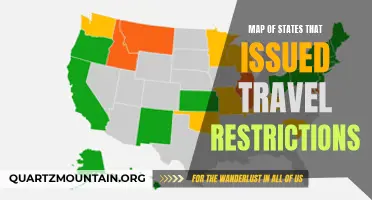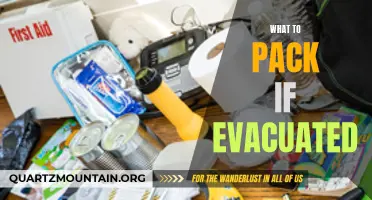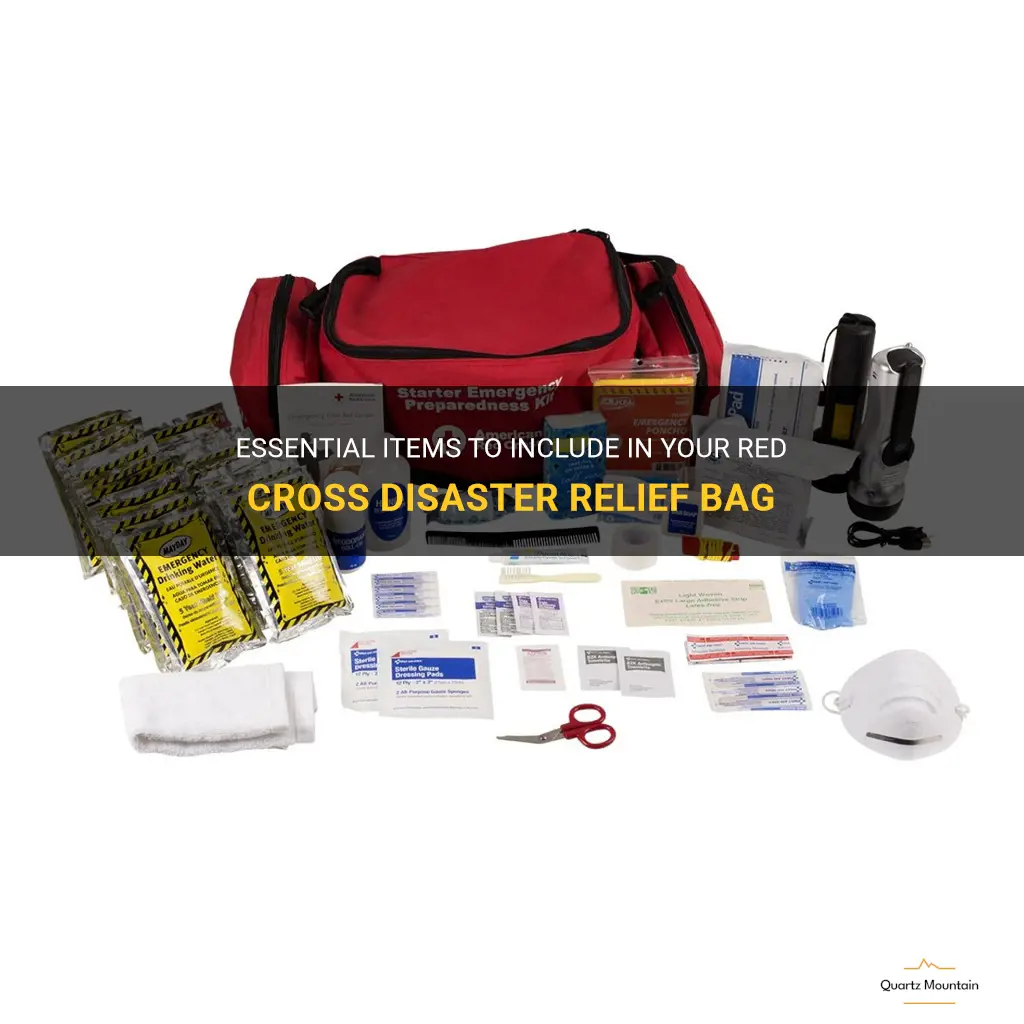
Natural disasters can strike at any time, leaving us with little time to gather our belongings and evacuate. In these moments, having a well-prepared disaster relief bag can make all the difference. When it comes to assembling your disaster relief bag, the Red Cross has identified a list of essential items that can help you and your family stay safe and comfortable during the toughest of times. From emergency supplies to personal hygiene items, including these essentials in your disaster relief bag is the first step towards being prepared and ready to face any adversity that comes your way.
| Characteristics | Values |
|---|---|
| Food | Non-perishable items such as canned goods, granola bars, and dried fruit |
| Water | 1 gallon per person per day for at least 3 days |
| Medications | Prescriptions, over-the-counter medications, and first-aid supplies |
| Clothing | Change of clothes, sturdy shoes, and rain gear |
| Bedding | Sleeping bag or blanket |
| Personal Hygiene Items | Toothbrush, toothpaste, soap, and hand sanitizer |
| Electronics | Battery-operated radio, flashlight, and extra batteries |
| Important Documents | Identification, insurance information, and emergency contact numbers |
| Cash | Small bills and coins |
| Tools and Supplies | Multi-purpose tool, duct tape, and plastic sheeting |
What You'll Learn
- What are the essential items that should be packed in a Red Cross disaster relief bag?
- How should food and water be packed in a disaster relief bag to ensure long-term viability?
- Are there any specific medical supplies or medications that should be included in the bag?
- What should be considered when packing clothing and personal hygiene items for a disaster relief bag?
- Are there any additional items or considerations to keep in mind when packing a Red Cross disaster relief bag for specific types of disasters, such as hurricanes or earthquakes?

What are the essential items that should be packed in a Red Cross disaster relief bag?
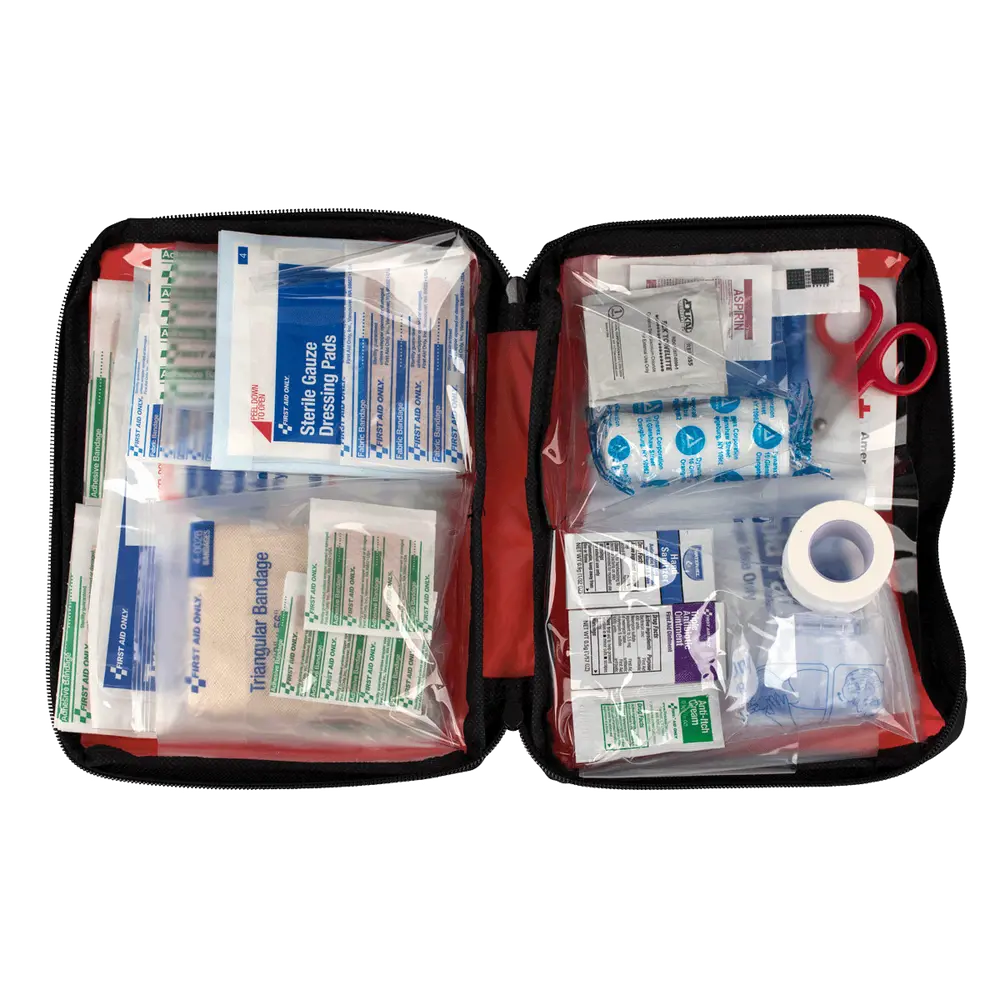
In times of natural disasters or emergencies, being prepared is crucial. One of the essential ways to ensure your safety and well-being during such situations is by having a well-stocked disaster relief bag. The American Red Cross has specific recommendations for what items should be included in such a bag, and following these guidelines can greatly increase your chances of survival and comfort during a crisis.
Water and Food:
The first and most important items to include in your disaster relief bag are water and non-perishable food items. The Red Cross suggests storing at least one gallon of water per person per day for three days. Additionally, it is advised to have a three-day supply of non-perishable food such as canned goods, energy bars, and dried fruits. Make sure to regularly check and update these supplies to ensure their freshness.
Medications and Personal Care Items:
If you or any members of your family rely on prescription medications, it is crucial to have a three-day supply of these medications in your disaster relief bag. You should also include any necessary over-the-counter medications such as pain relievers, antacids, and allergy medication. Additionally, personal care items such as hygiene products, toilet paper, and wet wipes should be packed.
First Aid Kit:
A well-stocked first aid kit is essential during emergencies. It should include items like bandages, adhesive tape, antiseptic wipes, gauze pads, tweezers, and scissors. It is recommended to have a manual or pocket-sized reference guide for first aid procedures as well. Make sure to regularly check and replenish the supplies in your first aid kit.
Communication Devices:
During a disaster, communication can be challenging. It is advisable to have a battery-powered or hand-crank radio in your disaster relief bag to stay updated on emergency broadcasts. Additionally, pack extra batteries and a whistle to signal for help if needed. It is also crucial to keep a list of important phone numbers, including those of family members, emergency services, and local authorities.
Clothing and Bedding:
Include a change of clothes, sturdy shoes, and a jacket or coat in your disaster relief bag. Consider the climate and weather conditions in your area when choosing the appropriate clothing. Additionally, pack blankets or sleeping bags to keep warm during cold nights.
Personal Documents:
In case you need to evacuate or seek assistance, it is essential to have copies of important documents in waterproof containers or sealed plastic bags. These documents can include identification cards, passports, insurance policies, medical records, and proof of address. Having these documents readily available can facilitate the recovery process after a disaster.
Tools and Miscellaneous Items:
Other essential items to include in your disaster relief bag are a flashlight with extra batteries, a multi-tool, duct tape, and a can opener. These tools can come in handy for various purposes, such as repairs, navigating in the dark, or opening canned food. Additionally, pack a pack of cards, books, or other forms of entertainment to help pass the time during long waiting periods.
Remember, the needs of each individual or family may vary, so it is essential to customize your disaster relief bag based on your specific requirements. Regularly check and update your bag to ensure that the supplies remain intact and fresh. Being prepared beforehand can significantly contribute to your safety and well-being during an emergency or disaster situation.
Essential Items to Pack for an Emergency Situation
You may want to see also

How should food and water be packed in a disaster relief bag to ensure long-term viability?
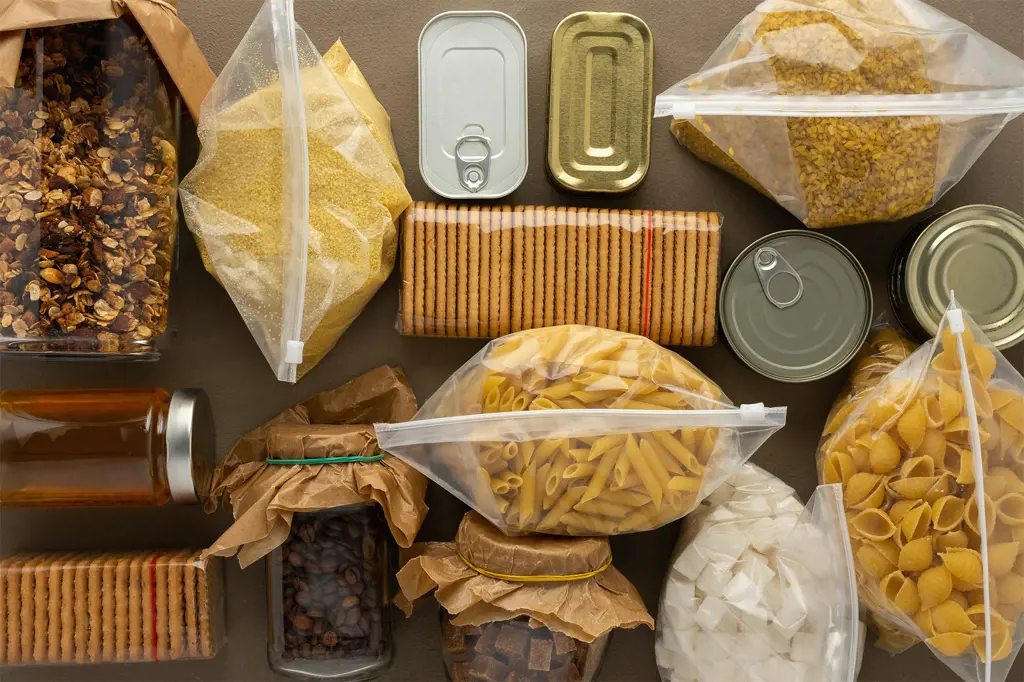
In times of natural disasters or emergencies, one of the most critical aspects is ensuring that affected individuals have access to clean, nutritious food and water. When preparing a disaster relief bag, it is crucial to pack these essentials in a way that ensures their long-term viability. In this article, we will discuss how food and water should be packed in a disaster relief bag, taking into consideration scientific recommendations, practical experience, and step-by-step guidelines.
Selecting appropriate food items:
When packing food for disaster relief, it is essential to choose items that are non-perishable and require minimal preparation. Canned foods, such as beans, vegetables, and fruits, are excellent choices as they have a long shelf life and retain their nutritional value. Additionally, energy bars, peanut butter, and dried fruits are lightweight, compact, and provide a good source of sustenance.
Ensuring nutritional adequacy:
In times of crisis, it is crucial to pack foods that provide a balanced mix of macronutrients and essential micronutrients. Look for items that are high in protein, carbohydrates, and healthy fats. For example, including canned tuna or chicken would ensure a good source of protein, while whole grain crackers or cereal bars can provide carbohydrates. It is also advisable to pack a multivitamin supplement to compensate for any nutritional gaps.
Packaging considerations:
To maintain the long-term viability of food, you should pay attention to the packaging. Opt for cans or pouches that are tightly sealed and undamaged, ensuring that there is no risk of contamination. It is best to avoid glass containers as they are prone to breakage during transportation or handling. Place the food items in resealable plastic bags or containers to keep them fresh and protected from moisture.
Water storage and purification:
Water is a crucial element in disaster relief as access to clean drinking water may be limited. Include several bottles of commercially sealed drinking water in your relief bag. To ensure a longer-term water supply, pack water purification tablets or a portable water filter. These can effectively remove bacteria, protozoa, and other contaminants from water sources, ensuring its safety for consumption.
Keeping the bag compact and lightweight:
In emergency situations, mobility is essential. Therefore, it is crucial to keep the disaster relief bag as compact and lightweight as possible. Choose foods that are densely packed with nutrients and avoid bulky packaging. Additionally, opt for collapsible water bottles that can be folded and easily stored when empty.
Regularly check and rotate the supplies:
Disaster relief bags are typically packed months or years in advance. It is essential to regularly check the expiry dates of the food items and replace them as needed. Create a rotation schedule, ensuring that you consume and replace non-perishable food items before their expiration dates. This practice guarantees that the food and water supplies remain viable and safe for consumption.
In conclusion, when packing food and water in a disaster relief bag, careful consideration must be given to ensure their long-term viability. By selecting appropriate food items, ensuring nutritional adequacy, and paying attention to packaging considerations, we can provide sustenance during critical times. Additionally, including water storage and purification methods, keeping the bag compact and lightweight, and regularly checking and rotating supplies will enhance the long-term viability of the relief bag. By following these guidelines, individuals and organizations can effectively support disaster-stricken communities in their time of need.
Essential Items to Pack for a Trip to Ottawa, Canada
You may want to see also

Are there any specific medical supplies or medications that should be included in the bag?
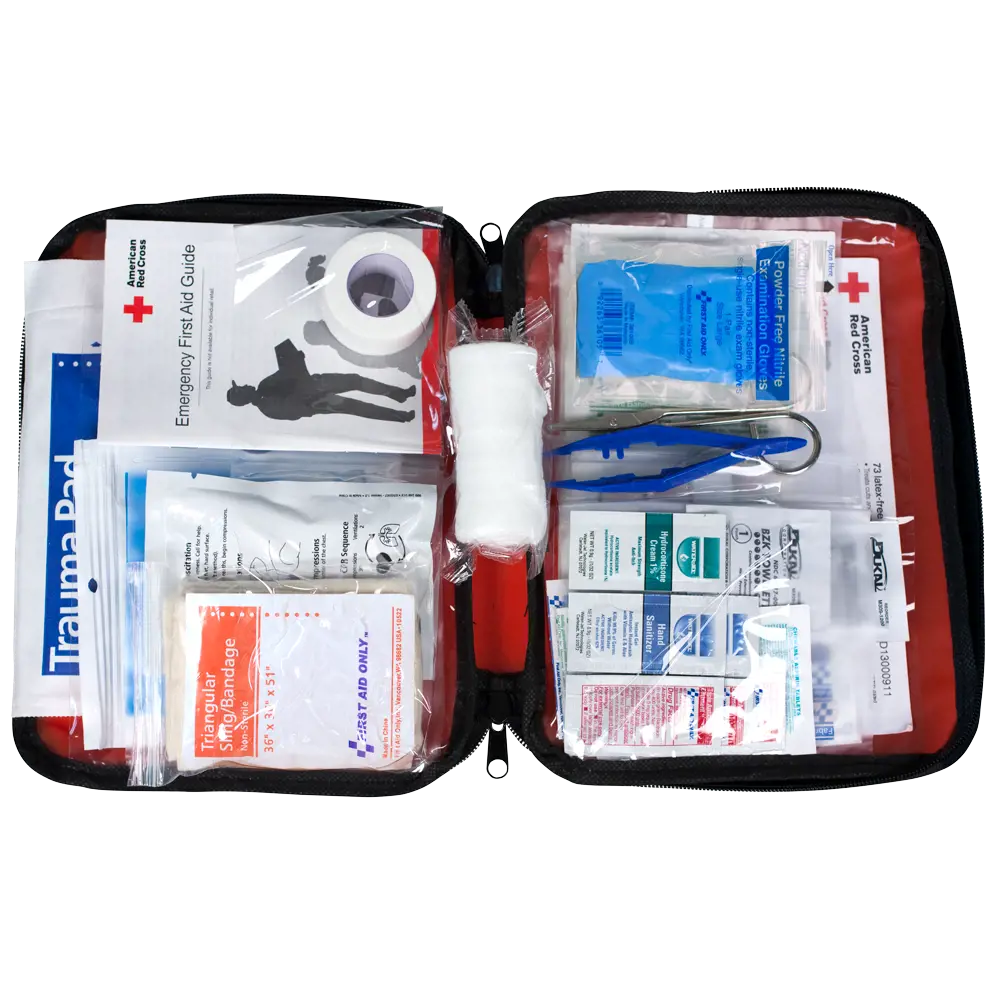
When preparing a survival bag, it is important to include essential medical supplies and medications that can help you in an emergency situation. These items can be crucial for providing immediate first aid and treating minor injuries or illnesses. Here are some specific medical supplies and medications that should be included in your survival bag:
- Bandages and Dressings: Pack a variety of bandages such as adhesive bandages, sterile gauze pads, and medical tape. These can be used to cover wounds and control bleeding.
- Antiseptic Solution or Wipes: Including antiseptic solution or wipes can help clean wounds and prevent infections.
- Painkillers: Over-the-counter painkillers like acetaminophen or ibuprofen can be useful for treating pain, fever, and inflammation.
- Prescription Medications: If you have any specific medical conditions or allergies, it is important to include a supply of your regular prescription medications in your survival bag. Make sure to regularly check the expiration dates and replace them as necessary.
- Antibiotic Ointment: This can be applied topically to prevent infection in minor cuts, scrapes, or burns.
- Tweezers: Tweezers can be handy for removing splinters or ticks.
- Thermometer: Including a thermometer in your survival bag can help you monitor your body temperature in case of illness or fever.
- Disposable Gloves: Disposable gloves are essential for maintaining hygiene while administering first aid.
- Oral Rehydration Salts: These salts can be used to quickly replenish electrolytes and fluids in case of dehydration.
- Medical Information and Personal Identification: It is important to include a copy of your medical history, emergency contact numbers, and any necessary identification documents in case you need medical assistance.
Remember, it is crucial to regularly check and update your medical supplies and medications to ensure they are not expired. Additionally, consider taking a first aid course to learn basic first aid techniques and gain the confidence to handle emergency situations effectively.
In conclusion, including essential medical supplies and medications in your survival bag is vital to ensure you are well-prepared for emergencies. Bandages, antiseptic solution, painkillers, prescription medications, and antibiotic ointment are some key items to include. Don't forget to add tools like tweezers and a thermometer, as well as disposable gloves for hygiene purposes. Finally, include medical information and personal identification in your bag for easy access by medical professionals. By having these supplies on hand, you can confidently handle minor injuries or illnesses while waiting for professional medical help to arrive.
Essential Gear to Include in Your Deer Hunting Pack
You may want to see also

What should be considered when packing clothing and personal hygiene items for a disaster relief bag?
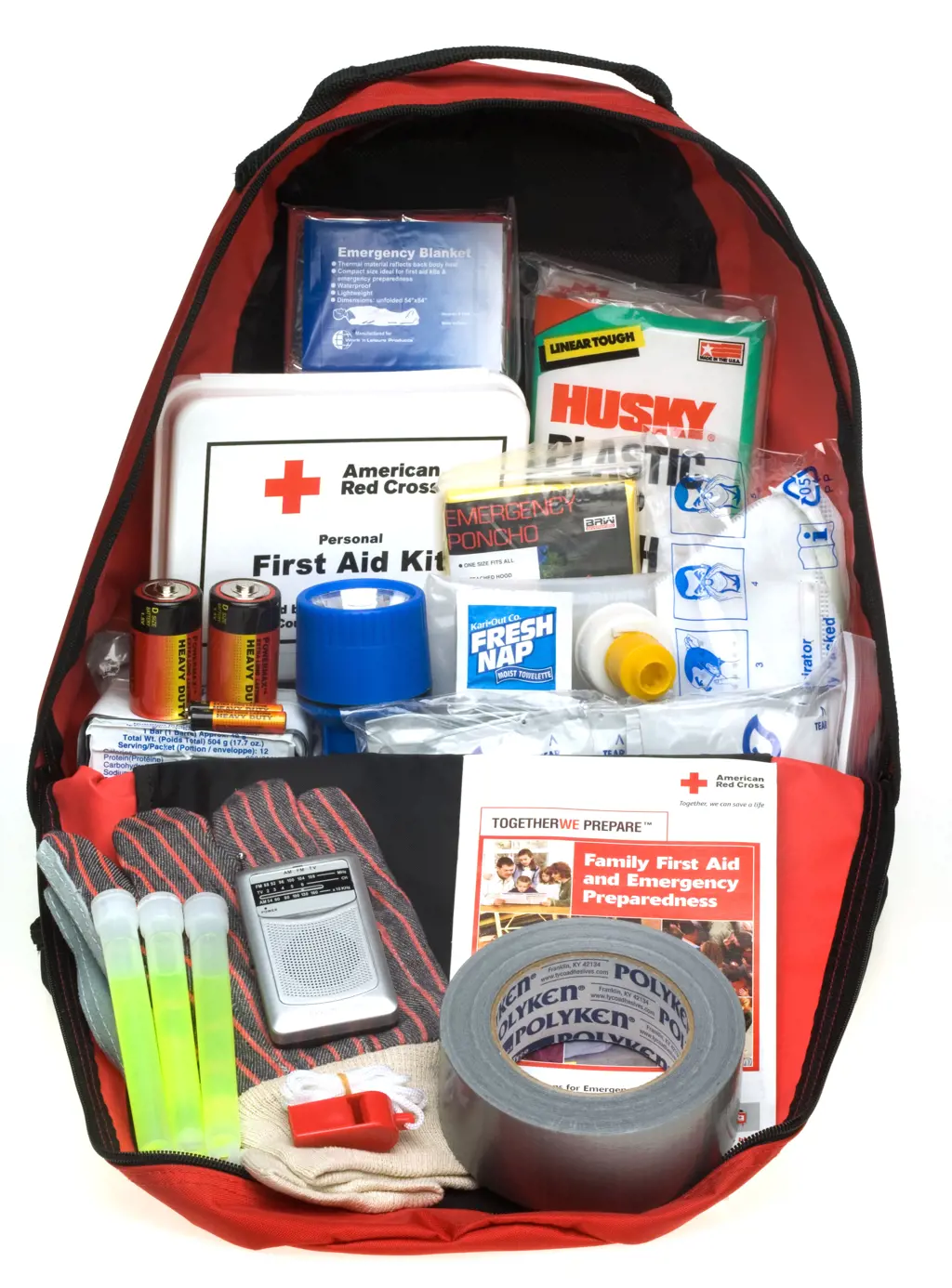
When preparing a disaster relief bag, it is important to consider packing clothing and personal hygiene items appropriately. These items are essential for maintaining personal hygiene, preventing infections, and ensuring comfort during difficult times. By following a few guidelines, you can ensure that your disaster relief bag is well-equipped to meet these needs.
Choose appropriate clothing:
When selecting clothing for your disaster relief bag, consider the climate and weather conditions of the area you are preparing for. If it is a cold region, pack warm clothing such as long-sleeved shirts, pants, and layers. Include a waterproof jacket or poncho to protect against rain. In hot climates, choose lightweight and breathable fabrics like cotton or linen. Don't forget to pack a hat and sunglasses for sun protection.
Include comfortable footwear:
Make sure to pack sturdy and comfortable footwear suitable for walking long distances. This is particularly important if you might need to navigate through debris or uneven terrain. Select closed-toe shoes or boots that provide good support and protection. Avoid open-toed footwear, as it increases the risk of injuries.
Pack personal hygiene items:
Maintaining personal hygiene is crucial during a disaster. Include basic personal hygiene items such as toothbrushes, toothpaste, soap, shampoo, and toilet paper. If space permits, consider including wet wipes, hand sanitizer, and feminine hygiene products. These items will help ensure cleanliness and prevent the spread of diseases.
Consider special needs:
If you or someone in your family has special needs, don't forget to pack items specific to those needs. For example, if you wear prescription glasses, pack a spare pair. If you have allergies, include any necessary medications or epinephrine auto-injectors. It is important to consider any medical or personal needs and ensure you have the appropriate supplies.
Include extra clothes and undergarments:
Emergencies can be unpredictable, and you may need to stay in temporary shelters for an extended period. It is advisable to pack at least two sets of extra clothes and undergarments. This will allow you to change into clean clothing when needed and maintain personal hygiene.
Keep items in waterproof bags:
To protect your clothing and personal hygiene items from moisture, it is essential to keep them in waterproof bags. This will prevent them from getting wet in case of rain or flooding. Ziplock bags or dry bags can be used to store smaller items, while larger waterproof bags can be used for clothing.
Regularly check and replace items:
Periodically check your disaster relief bag to ensure that clothing and personal hygiene items are in good condition and not expired. Replace any expired medications, update clothing as necessary, and restock toiletries. This will help ensure that your bag is always ready to use in case of an emergency.
In conclusion, when packing clothing and personal hygiene items for a disaster relief bag, it is important to consider the climate, include appropriate clothing and footwear, pack personal hygiene items, accommodate any special needs, include extra clothes and undergarments, keep items in waterproof bags, and regularly check and replace items. Following these guidelines will help ensure that your disaster relief bag is well-prepared to meet your needs during difficult times.
The Ultimate Packing Guide for Your Trip to Tuscany
You may want to see also

Are there any additional items or considerations to keep in mind when packing a Red Cross disaster relief bag for specific types of disasters, such as hurricanes or earthquakes?
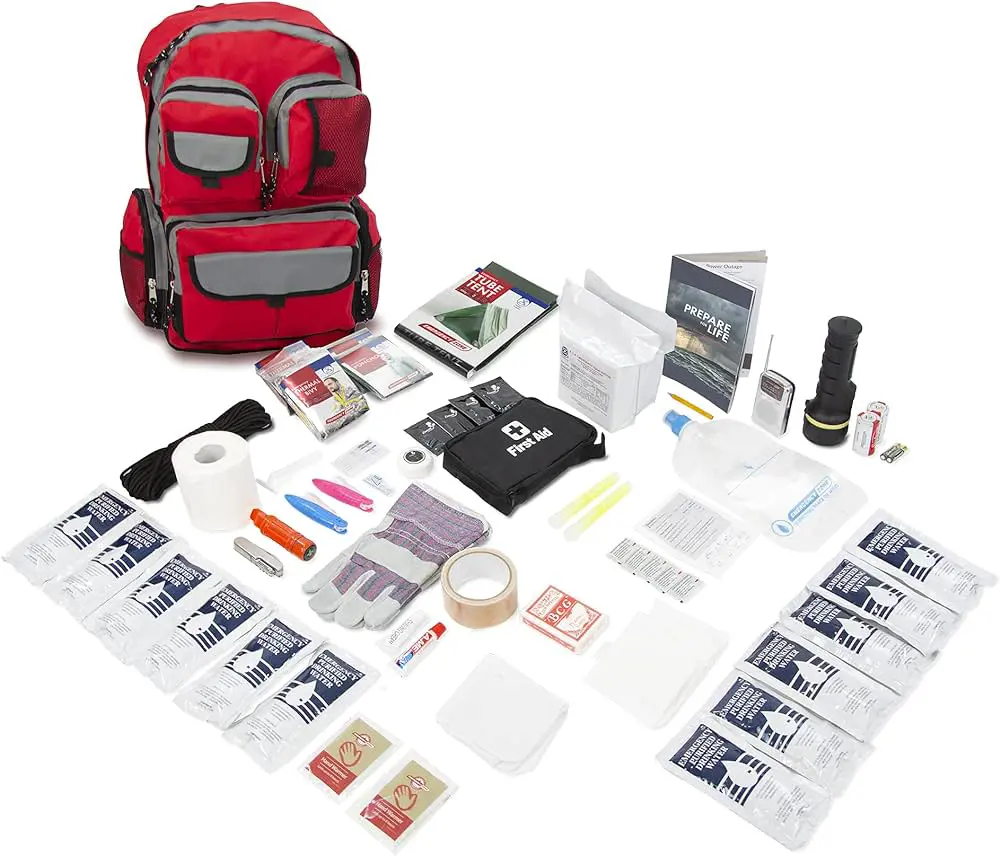
When preparing a disaster relief bag for specific types of disasters, such as hurricanes or earthquakes, there are several additional items and considerations to keep in mind. These types of disasters can bring unique challenges and circumstances, so it’s important to tailor your emergency preparedness supplies accordingly.
First and foremost, it’s important to have a sturdy backpack or duffle bag to pack your disaster relief supplies. This will make it easier to carry and transport your supplies in case you need to evacuate. Make sure the bag is waterproof or has a rain cover to protect your supplies from water damage.
For hurricanes, it’s important to include items specifically designed to withstand high winds and heavy rain. This includes items such as tarps, ropes, and bungee cords to secure your shelter or protect your belongings. You should also include extra batteries and a battery-powered or hand-crank radio to stay updated on the latest weather alerts and emergency information.
In case of flooding, include items such as waterproof bags or containers to protect important documents and belongings. You should also consider including water purification tablets or a water filter to ensure a clean and safe water supply. If you live in a flood-prone area, it may be beneficial to have inflatable rafts or a small boat as part of your disaster relief supplies.
In the case of earthquakes, it’s important to pack your disaster relief bag with items that can help you survive without electricity or access to clean water for an extended period of time. This includes non-perishable food, a manual can opener, and a portable camping stove or cooking equipment. You should also pack a sturdy pair of shoes, a whistle, and dust masks or respirators to protect yourself from dust and debris.
Additional considerations for earthquakes include having a wrench or other tools to turn off utilities such as gas, water, and electricity. You should also include a first aid kit, extra prescription medications, and a list of emergency contacts.
In general, it’s important to have a basic disaster relief bag that includes essential items such as food, water, shelter, and first aid supplies. However, depending on the specific type of disaster, there may be additional items and considerations to keep in mind. It’s important to stay informed about the potential hazards and risks in your area and tailor your disaster relief supplies accordingly.
For example, if you live in an area prone to wildfires, you may need to include items such as fire-resistant clothing, a fire extinguisher, and a portable water pump. If you live in an area prone to tornadoes, you may need to include a helmet and a whistle to alert rescue workers to your location in case you are trapped.
In conclusion, when packing a Red Cross disaster relief bag for specific types of disasters, such as hurricanes or earthquakes, it’s important to consider the unique challenges and circumstances of each type of disaster. Tailor your emergency preparedness supplies accordingly and stay informed about the potential hazards and risks in your area. With the right supplies and preparation, you can increase your chances of staying safe and surviving during a disaster.
Essential Items for Every DJ's Bag: A Comprehensive Packing Guide
You may want to see also
Frequently asked questions
When preparing your Red Cross disaster relief bag, it's important to include essential items such as non-perishable food items, bottled water, a first aid kit, extra clothing, a flashlight with extra batteries, and important documents.
It's recommended to pack at least a three-day supply of non-perishable food items and one gallon of water per person per day. This will ensure you have enough sustenance during a disaster or emergency situation.
It's advised to pack a change of clothing for each member of your family, including comfortable and durable clothing suitable for the weather conditions in your area. Don't forget to include sturdy shoes or boots, as well as extra socks.
A first aid kit is important to have in your disaster relief bag because it allows you to treat minor injuries and provide immediate medical attention if needed. The kit should include items such as bandages, antiseptic wipes, pain relievers, and any necessary prescription medications.
It's important to include important documents in your disaster relief bag to ensure you have them on hand during an emergency. This may include copies of identification cards, passports, insurance policies, medical records, and any other important documents or contact information.




